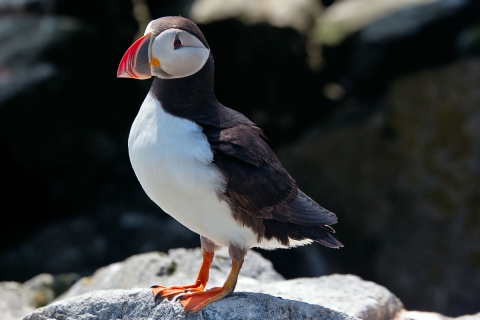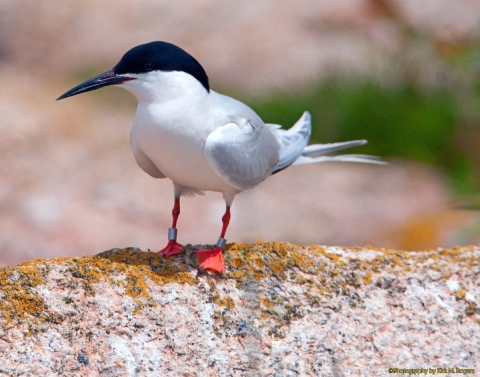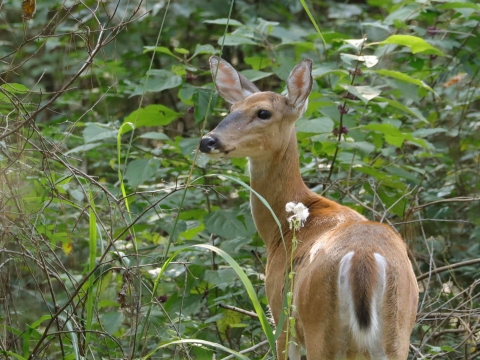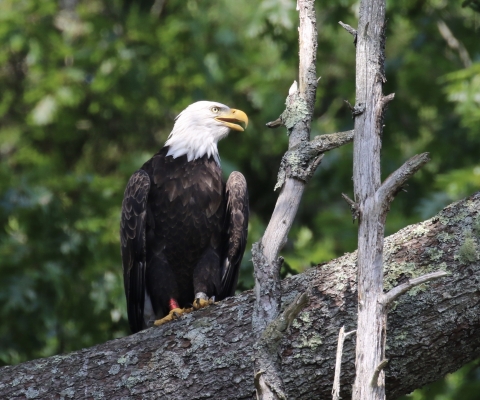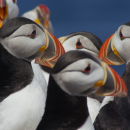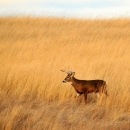Featured Species
The Atlantic puffin, also known as the common puffin, is a species of seabird in the auk family. It is the only puffin native to the Atlantic Ocean and reach its southern breeding distribution in Maine. Atlantic puffins nest in burrows on rocky islands with short or no vegetation. They spend the rest of the year bobbing on the ocean and diving after small fish.
Roseate tern US and Maine endangered species; gray body; pale gray, slender wings; black cap; their bill is mostly black. The terns are small, slender seabird with long, pointed wings and straight pointed bill; plunge dive for fish or skim fish from surface; generally lay eggs in shallow depression in tall vegetation undercover; migrate south for winter along the coast of Brazil and Argentina.
The Razorbill Maine threatened species; short stocky seabird with black back, head, and upper wings; white body; deep bill with white vertical line on adult. It is the closest living relative of the extinct great auk. Wild populations live in the subarctic waters of the Atlantic Ocean. With the exception of the breeding season, Razorbills re-main on the water and spend winters on open ocean; they use wings to propel themselves underwater in pursuit of herring, hake, and sand lance; reach southern limit of breeding distribution in Maine; nest under rocks or boulders, often observed sitting on the water.
Maine is home to one of the largest of the 30 recognized subspecies of white-tailed deer. After attaining maturity at age five, our Bucks can reach record live weights of nearly 400 lbs. Most Adult bucks can have a live weight ranging from 200 up to nearly 400lbs. and will stand 36 to 40" at the shoulder. Does are considerably smaller and normally weigh 120 to 175 pounds live weight. Whitetails have reddish brown fur in the summer switching to a grayish brown in winter. Their trademark white tail, when erected, flashes a danger signal to other deer in the vicinity.
Bald Eagles are primarily fish eaters at inland settings on lakes and rivers, but also scavenge many meals by harassing other birds or by eating carrion or garbage. In coastal estuaries and offshore islands, they eat a more varied diet adding seabirds and waterfowl. Eagles will perch along shorelines waiting for prey to come by.



